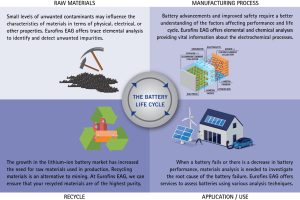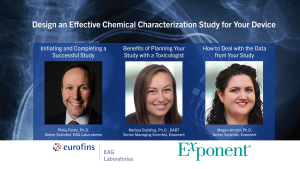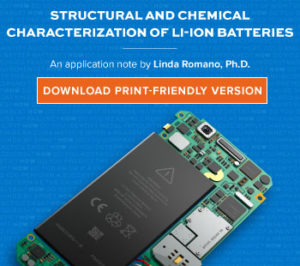
Drive Supply Chain Efficiency with Testing Support from EAG Brochure
EAG provides clients with testing support for every stage of the supply chain
Home » CSIRO Hub Webinar Featuring EAG Scientist

We’re excited to share that Dr. Gideon Bartov, one of our leading experts in materials purity analysis, will join the panel for “How Pure is Pure? The Future of Purity Testing in Australia” on November 11, 2025.
Hosted by the Australian Critical Minerals Research & Development Hub, the webinar will explore the evolving landscape of High-Purity Alumina (HPA), and the global standards driving purity testing across industries, from energy storage to semiconductors and advanced ceramics.
Gideon will be sharing insights on Glow Discharge Mass Spectrometry (GDMS), a benchmark technique for achieving trace-level impurity detection in high-purity materials.
To learn more and register, please go to: https://webcast.csiro.au/#/event-registration/c0d821d1-820a-4459-bb60-40a0ab60525d
Panel Name: How Pure is Pure? The Future of Purity Testing in Australia
Date: November 11, 2025
Time: 7:00 PM to 8:00PM EST
Location (Linked): Online via CSIRO Webcast
Abstract:
You’ve heard of the expression “to the nth degree”? When talking about nanoscale characterisation, chemists also talk in ‘N’s – the number of nines that classify the purity of a substance. But how pure is pure? Take High-Purity Alumina (HPA, α-Al2O3) where purity starts at 99.99% (4N) to at least 99.9999% (6N), depending on end-user requirements. Australia’s critical minerals list was updated in 2022, adding high-purity alumina. The purer HPA is, the more chemically stable, scratch and temperature-resistant it becomes. That makes HPA one of the key materials essential for the energy transition, with applications in LEDs, synthetic sapphire, catalysts, and lithium-ion batteries, where its growing use to coat separator sheets improves safety and battery life. Australia has plentiful supply of aluminium-containing resources and potential to move downstream into high-tech manufacturing. The global HPA market is projected to increase from USD 4.63 billion in 2024 to over USD 15 billion by 2030, which presents a significant opportunity for Australia. Accurately quantifying the extremely low levels of trace impurities is essential to the development of improved purification processes and processing of those minerals. But establishing precise information at such small scales using larger volume interactions of conventional techniques is challenging. So, what are the different existing methods and techniques for high purity testing, and where does Australia’s capability currently lie? CSIRO’s Hub-funded research on HPA is tackling the purity challenge. The findings are relevant to Australia’s ambition to move downstream and produce valuable high purity metals and materials from our critical minerals. Building this new analytical capability in Australia helps diversify purity testing options available to industry, as at today, most Australian companies send HPA and other high purity critical minerals overseas for testing by Glow Discharge Mass Spectrometry (GDMS) in the USA. This method is a widely recognised benchmark technique for high purity analyses, but also requires export permits, is costly and can take months to get results, putting project timeframes in jeopardy. Join our webinar to find out about GDMS testing and ICP-MS/OES testing from both the research and industry, including the benefits, challenges, research underway and what purity testing options are on the table for industry to access.

EAG provides clients with testing support for every stage of the supply chain

As the battery industry continues to evolve, Eurofins EAG Laboratories is your partner to bring your product to market faster and more efficiently.

May 15, 2024
Check out our online symposium presented by EAG Laboratories and Exponent!

Food contaminant and beverage contaminant identification requires a strategic analytical approach using control and suspect sampling.

EAG divides FA tasks into three levels. In each level, we employ optimal techniques for device characterization, defect localization, and root cause failure analysis.

Battery characterization improves lithium-ion battery safety and performance using techniques such as SEM, TEM, XPS, GDMS, FTIR, ICP-OES, Raman and failure analysis
To enable certain features and improve your experience with us, this site stores cookies on your computer. Please click Continue to provide your authorization and permanently remove this message.
To find out more, please see our privacy policy.